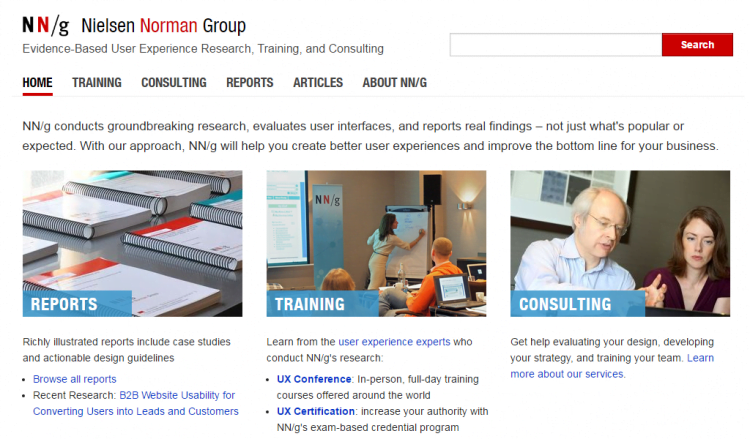How to Use UX Rules to Support SEO?

How to benefit from UX rules when doing SEO? Is it possible to find a happy medium between positive user experience and satisfactory website positions in the search results? Keep reading our entry to learn answers to these and other nagging questions.
Table of contents:
- User Experience – What Is It?
- Does UX Have A Direct Impact On SEO/
- How To Benefit From UX for SEO?
- Is It Possible To Measure User Experience?
- Is UX The Future of SEO?
User experience, or UX for short, is a term attracting the attention of all those occupied with new technologies, psychology or design. It gained popularity thanks to the development of cognitive science and the group of UX enthusiasts (meaning not only designers but also SEO specialists) is constantly growing. So how can UX be applied in SEO?
User experience – what is it?
In simple words, the term refers to all experiences and impressions users get while benefiting from interactive products. UX is primarily applicable when talking about websites and applications. Usability is frequently used as a substitute for this term. As a matter of fact, it’s a significant generalization, as UX is a broader term and usability is only one of its components. It’s worth noting that user experience isn’t an addition to the website. Users always have certain experiences and impressions, the only question is whether they’re negative or positive.
In the dim and distant past… When did UX emerge?
When taking into consideration a little bit more than websites and apps, the history of UX is much longer than we could expect. In 1911, Fredrick Taylor published The Principles of Scientific Management a paper devoted to a study he and Tom Ford conducted among factory workers. Their approach was truly innovative because they decided to take advantage of their insights to boost work efficiency.
The history of user experience in its current sense is a bit shorter and it started together with the development of cognitive science and human-computer interaction research. However, UX as a new field flourished primarily along with publications and research conducted by Jakob Nielsen and Don Norman.
At the end of the ’80s, Don Norman wrote an extremely popular book – “Design of everyday things” – where he focused on the issue of usability of designed objects and the problems that may arise in case of their inadequacy. Nielsen Norman Group, a consulting company founded in the mid-1990s, turned out to be a smash hit and continues to set trends to this day.
Does UX have a direct impact on SEO?
Factors affecting website positions aren’t fixed and a strategy that works well now doesn’t have to be successful in a few years or even months. Although there are more than 200 ranking factors, Google remains quite reserved when it comes to discussing the extent to which specific elements affect rankings. However, thanks to the appropriate experience and staying up to date with current trends we can easily notice that user satisfaction is of utmost importance to Google.
Google search engine – for robots or users?
UX consists of many elements such as usability, design or accessibility of a website. The recent years have shown that user experience is an integral part of SEO, not only its addition. This was officially confirmed by Google. The search engine is created mainly for users, therefore, it’s crucial to analyze their experiences and needs. To confirm these words, let’s quote a publication created after studying several hundred thousand websites displayed on popular keywords. The analysis proved the importance of UX for SEO, which is also evidenced by many other studies.
It shouldn’t be surprising as each of us is an Internet user and we’re perfectly aware of how irritating it may be to navigate an unintuitive website that loads for ages. In most cases, we probably click the “back” button as soon as possible which also has a negative impact on the position of the website.
Does your website engage users?
If a user decides to stay on a website and explore it, it informs Google robots about the high quality of the page. Moreover, user engagement on the page is also an important element. Real user’s interest in your products or services and properly located CTA (Call To Action) buttons are the cornerstone of a well-functioning and highly profitable website. Remember that high positions on individual keywords aren’t the ultimate objective. SEO for specific phrases should generate website traffic and translate into high conversions. You can easily imagine a website that’s ranked in top positions, however, it’s not intuitive and doesn’t encourage users to shop or take any other steps. In this case, users will simply resign and browse pages ranked in subsequent positions. Such “clicking-through” successive pages in the search results is called “pogo-sticking”. For Google, it’s a sign that your website isn’t valuable because it doesn’t provide visitors with needed information. That’s why UX for SEO is so crucial.
How to benefit from UX for SEO?
Probably no one needs to be convinced anymore that UX is important for SEO. Therefore, it’s worth benefiting from the user experience when devising your SEO strategy. Below you can see a few exemplary elements you should focus on.
1. Navigation
The design and location of a website menu should be determined by the function of a particular website. Placement and look is extremely vital, however, content is the most important. Website menus and navigation are supposed to help users find the necessary information and determine the current location on the page. Properly developed navigation helps both users and Google robots to move around the site and index subpages. Intuitive navigation is a subject for a separate article, therefore, today we only underline its importance.
2. Design
A properly structured website interface is another factor that translates into a positive user experience and brand recognition. Just as you prefer to surround yourself with appealing things every day, a visually attractive website will definitely attract our eyes for longer. What’s more, the satisfaction from using it will also be greater (the phenomenon of attractive things i described in Donald Norman’s book “Emotional Design: Why We Love (or Hate) Everyday Things”). However, usability doesn’t equal aesthetics. In fact, we can easily imagine that browsing a less visually appealing website can be more satisfying than browsing a page with outstanding design, but with poor navigation or long loading time (e.g. caused by the animated background).
3. Responsive web design
Responsive web design is an incredibly relevant ranking factor. Websites that aren’t tailored to screen resolution are hardly readable or intransparent for users. Today, responsive web design is a must-have if you want to reach high positions in the search results and ensure the comfort of users visiting your page.
4. Website loading time
Just like in the case of responsive web design, page loading time has a significant impact on the rankings. A website that loads long increases the bounce rate when using tablets, computers, and smartphones. Heavy images are frequently responsible for this state of affairs and decreasing their size can be enough to reduce website loading time. Generally, users are rather impatient, and browsing a slow-loading website is an extremely frustrating and not very positive experience. Probably everyone has been in such a situation and doesn’t have to be convinced how problematic it may be.
5. Content
Appropriately long and optimized website content is a key to high positions in the search results. Don’t forget that you write mainly for users, meaning your potential customers. Content should include the most important pieces of information written in correct and concise language. Neither Google nor website visitors are going to appreciate long blocks of texts stuffed with repeating keywords. A well-structured text with headers and bolded elements will be easy and quick to read or actually scan (which most users do). When it comes to pieces of content that are supposed to be shared on social media, it’s advisable not to add too many share buttons. It might bring a counterproductive effect. The paradox of making a choice is that having too many options frequently equals not choosing any at all.
6. Keywords
UX tips that support SEO should be implemented already when doing keyword research. Does the selected keyword reflect your website content? To put it simply: will users entering your site find the exact information they’re looking for? Subsequent Google algorithms effectively verify if applied keywords correspond to page content.
Is it possible to measure user experience? Helpful tools
If we were to give you one piece of advice related to UX, it would definitely be: do the research as soon as possible! It’s best to do it before you invest a significant amount of money in website development. Sometimes, a simple prototype on a piece of paper is enough, whereas in other cases it might be necessary to create a mockup version devised with the use of Lucidchart or more advanced Axure. The more errors you notice and get rid of at the very beginning, the more minimized the costs of implementing necessary modifications later on. Remember that altering a sketch on a piece of paper is much easier and cost-efficient than hiring a team of specialists to redesign your website.
The second piece of advice is to engage potential users of your website in your research. Some people may fall into the trap of thinking that since they are also users, their experience with the site will be similar to its other visitors. It’s a huge mistake because if you developed the site yourself, you probably won’t notice all the mistakes. Instead, you’ll focus on your solutions so much that you won’t be able to see any alternatives. Besides, navigating the site isn’t challenging if you know it inside out. Although the abovementioned pieces of advice seem obvious, many people make these extremely common mistakes.
It’s worth hiring a company that can professionally research your website. Since this solution is a bit expensive, you can try to analyze the website on your own. The market abounds in books and publications devoted to UX research. Benefit from interviews, surveys, eye-tracking, and many other resources.
Quality data is incredibly important in the case of UX. However, quantitative data is equally vital and can be collected with the use of many publicly available programs. Undoubtedly, Google Analytics is one of the most popular tools frequently chosen to measure website traffic, bounce rate, and time spent on the page.
Is UX the future of SEO?
Without a shadow of a doubt, UX is currently one of the key elements of SEO. People who don’t appreciate the power of building useful and user-friendly websites will quickly see the consequences reflected in their positions in the search results. Now, UX is only one of the factors, however, its importance increases every day. According to many industry experts, UX is the future of SEO, and Google algorithms are going to take user experience into account more and more frequently. For the time being, UX doesn’t always go hand in hand with SEO which has been discussed in the article prepared by Rand Fishkin. However, it seems to us that it’s only a matter of time.







